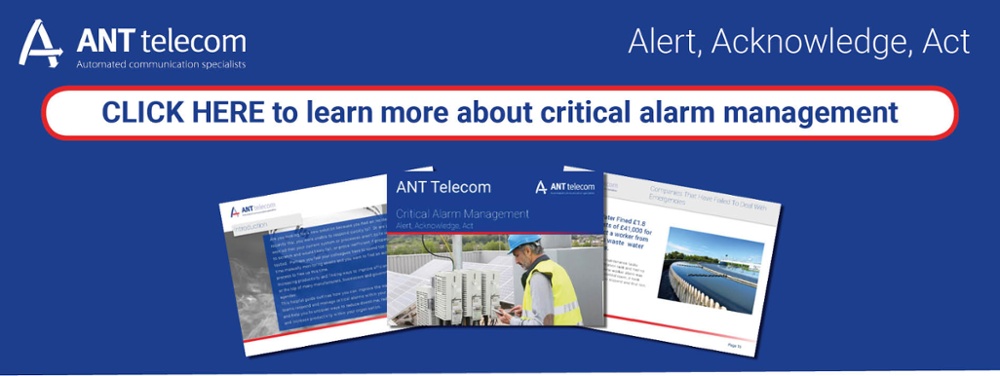 Effective communications are an indispensable part of any successful business, allowing pertinent information to flow between departments and reach out to the customer when required. If an organisation’s ability to exchange information properly is limited, then their performance will be unnecessarily constrained. Communications can be broadly grouped into two distinct categories: internal and external. Both categories have their own focuses and are equally important in ensuring the success of a company. As such, the methods used to facilitate communication are deserving of a considerable amount of attention from managers, as failing to update them can leave organisations lagging far behind the competition.
Effective communications are an indispensable part of any successful business, allowing pertinent information to flow between departments and reach out to the customer when required. If an organisation’s ability to exchange information properly is limited, then their performance will be unnecessarily constrained. Communications can be broadly grouped into two distinct categories: internal and external. Both categories have their own focuses and are equally important in ensuring the success of a company. As such, the methods used to facilitate communication are deserving of a considerable amount of attention from managers, as failing to update them can leave organisations lagging far behind the competition.
Whilst at first glance, internal and external communications might appear to be quite similar, they are in fact radically different. External communications are purely customer-facing in their nature, focused around maintaining a consistent and carefully curated image of the organisation in question to the end user of their products or services. This means that they are typically only handled by a small percentage of the total workforce, usually marketing, sales and support personnel. Internal communications, meanwhile, are central to many key business functions. They range from simple emails between colleagues to reports disseminated to the entire company or statistics filtered back up to management. In this manner, internal communications allow senior staff to review business goals and directly influence company culture, setting the tone for how work is done within their company.
More importantly, internal communications deal with the day to day running of a business. This means that messages have to contain data that is both readily understandable and actionable. In high-pressure environments with strict schedules such as factory production lines, the ability to relay information effectively is of paramount importance. Poor communications infrastructure and procedures within a department or facility can result in glaring problems in terms of inefficiency and overall quality of work.
However, internal communications are not just for regular work, but also for emergencies, where it is even more important that they are properly handled. When major incidents arise, they can cause production to grind to a halt and cause significant losses if not speedily dealt with. This can be anything from a machine slowing down due to lack of maintenance or a catastrophic equipment failure. In either case, specialist staff will need to be quickly notified so that they can deal with the problem. Alternatively, a major incident could be a health and safety issue such as a workplace accident. In such cases, lives can depend on the speed with which the problem is resolved. For this reason, most companies have an alarm system installed at their sites.
However, traditional alarm systems are heavily dependent on the accurate relaying of information in order to mount a quick response to a problem. In the vast majority of cases, human workers will be responsible for this. Control room staff will be notified of an alarm’s activation and then prioritise it and decide as to how to respond, finding the contact details for the relevant response team and then relaying the details to them. Whilst this may sound sufficient in theory, human error can often creep into the process. Simple mistakes multiply when taking into consideration the fact that many control rooms cover large facilities, with a significant number of low priority alarms being raised in the course of a single day and needing to be triaged by the staff. Ultimately, overwork, complacency or lack of experience can cause a high priority alarm to be mishandled or – in the worst case scenario – ignored. This is especially true when the control room staff are responsible for relaying information between different responders, often needing to accurately relate technical details and jargon in order to get a problem resolved. Furthermore, managers will need to be regularly updated on the situation and the actual production workers will need to be kept informed. Such a high workload eventually means that a mistake will be made. This is where automation of alarms can massively improve the quality of internal communications.
In many cases, a critical alarm management system is an upgrade to the existing alarm system, adding a computerised buffer of sorts to receive an alarm, assign it a priority and initiate a response before it even reaches the desks of the control room staff. Preset notifications containing the broad details of the problem are sent out automatically to response teams via direct messaging. If no acknowledgement of the alarm is received within an agreed time limit, the alarm is escalated to the responsible managerial staff. Once on-site, the response team can diagnose the problem and directly update the critical alarm management system with the details. By logging into the system, managers are able to see exactly what is happening in real time as the system gets updated by technicians on the ground. This not only decreases the time needed to make decisions, but allows for instructions to be rapidly passed back to the responders.
All communications filtered through the critical alarm management system will be automatically saved for future reference. This means that when reviewing the problem at a later date, it will be straightforward to identify what elements of the response went well and which were lacking, as well as allowing a more objective look at the causes of the incident itself. Senior managers can use this information to then modify processes going forward, effectively changing the way work is done to be more efficient thanks to the improvements to the internal communication system that automation brings.
Ultimately, the benefits of upgrading to a critical alarm management system are manifold. They allow communications to be kept fast and concise during emergencies, ensuring that the right people get the right information when they need it. Additionally, the fact that communications are logged and stored in one place allows easy analysis afterwards. An ANT critical alarm management system also gives straightforward integration with existing systems, resulting in minimal disruption to processes that are already in place. By augmenting a company’s internal communication methods, automation results in a safer and more efficient workplace.





